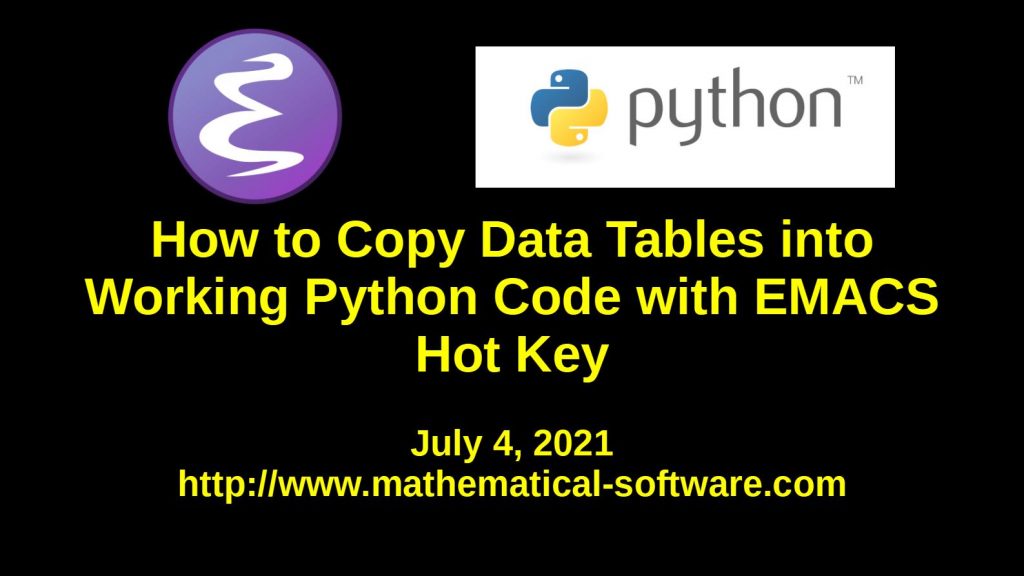
Alternative Video: BitChute NewTube ARCHIVE
Censored Video: YouTube
HOW TO COPY AND PASTE DATA TABLES INTO WORKING PYTHON CODE WITH EMACS
Video shows how to select, copy, and paste text data tables into working Python code with the Emacs text and code editor’s rectangle mode and an EMACS hotkey.
EMACS HOTKEY CODE SHOWN: http://wordpress.jmcgowan.com/wp/code-functions-to-convert-a-text-data-table-to-working-python-code-in-emacs/
The Emacs text and code editor has a built in rectangle mode for selecting, copying, pasting, and maniuplating rectangular regions in text since Emacs 24.
https://www.gnu.org/software/emacs/manual/html_node/emacs/Rectangles.html
About Us:
Main Web Site: https://mathematical-software.com/
Censored Search: https://censored-search.com/
A search engine for censored Internet content. Find the answers to your problems censored by advertisers and other powerful interests!
Subscribe to our free Weekly Newsletter for articles and videos on practical mathematics, Internet Censorship, ways to fight back against censorship, and other topics by sending an email to: subscribe [at] mathematical-software.com
Avoid Internet Censorship by Subscribing to Our RSS News Feed: http://wordpress.jmcgowan.com/wp/feed/
Legal Disclaimers: http://wordpress.jmcgowan.com/wp/legal/
Support Us:
PATREON: https://www.patreon.com/mathsoft
SubscribeStar: https://www.subscribestar.com/mathsoft
BitChute (Video): https://www.bitchute.com/channel/HGgoa2H3WDac/
Brighteon (Video): https://www.brighteon.com/channels/mathsoft
Odysee (Video): https://odysee.com/@MathematicalSoftware:5
NewTube (Video): https://newtube.app/user/mathsoft
Minds (Video): https://www.minds.com/math_methods/
Locals (Video): https://mathematicalsoftware.locals.com/
Archive (Video): https://archive.org/details/@mathsoft
(C) 2021 by John F. McGowan, Ph.D.
About Me
John F. McGowan, Ph.D. solves problems using mathematics and mathematical software, including developing gesture recognition for touch devices, video compression and speech recognition technologies. He has extensive experience developing software in C, C++, MATLAB, Python, Visual Basic and many other programming languages. He has been a Visiting Scholar at HP Labs developing computer vision algorithms and software for mobile devices. He has worked as a contractor at NASA Ames Research Center involved in the research and development of image and video processing algorithms and technology. He has published articles on the origin and evolution of life, the exploration of Mars (anticipating the discovery of methane on Mars), and cheap access to space. He has a Ph.D. in physics from the University of Illinois at Urbana-Champaign and a B.S. in physics from the California Institute of Technology (Caltech).


